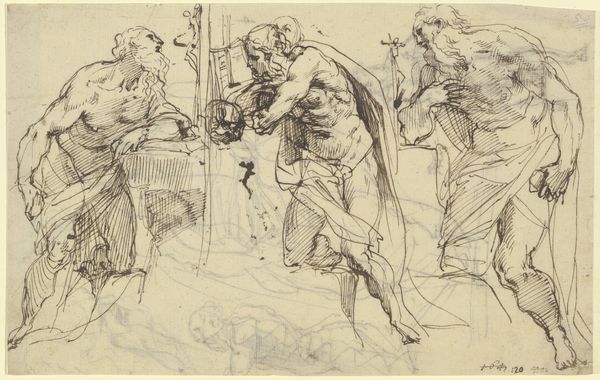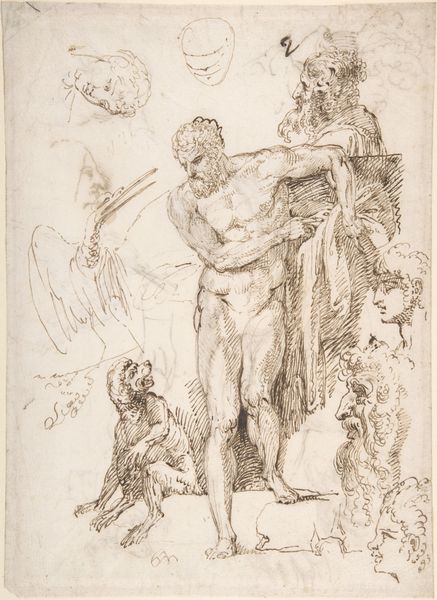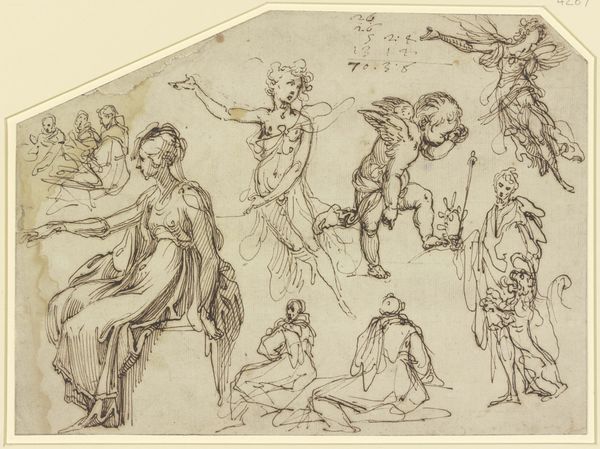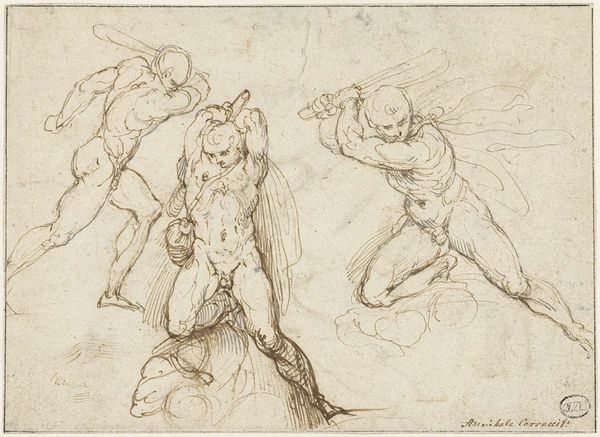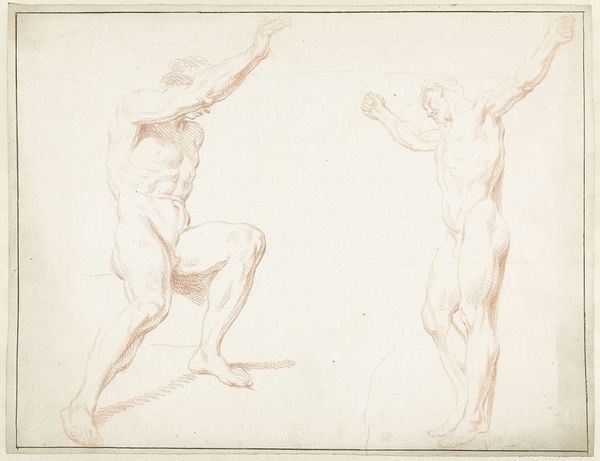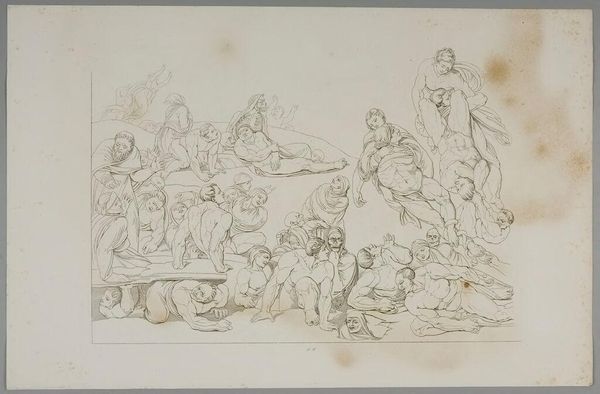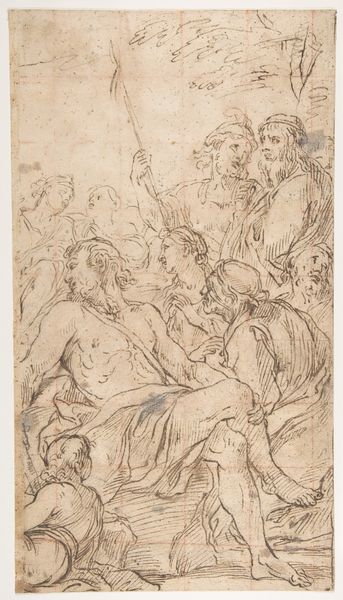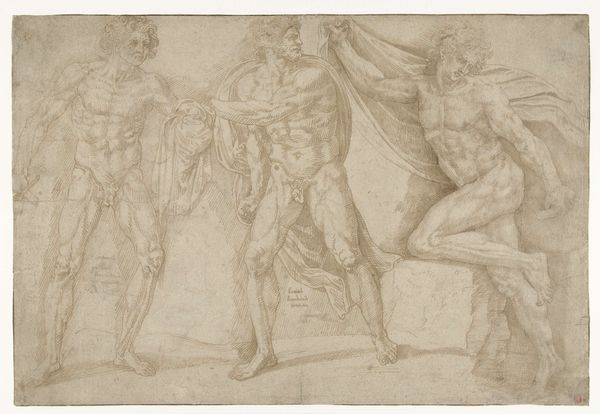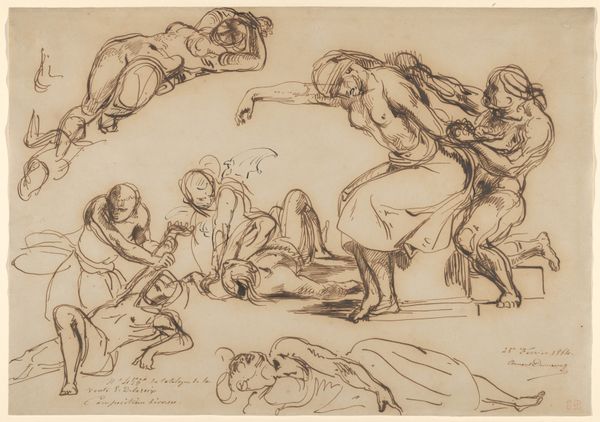
Dimensions: support: 275 x 399 mm
Copyright: CC-BY-NC-ND 4.0 DEED, Photo: Tate
Curator: This intriguing wash drawing is by James Barry, the 18th-century Irish painter. It's titled "The Judgment of Paris." Editor: My first impression is one of tension—the three goddesses seem to surge towards Paris, whose expression is one of apprehension. Curator: Barry was deeply engaged with classical mythology, using it to explore themes of beauty, power, and, indeed, judgment. The gaze feels inherently political, don't you think? Editor: Absolutely, particularly when understanding how the Royal Academy influenced Barry's work. The image is a study, allowing us into his artistic process. This glimpse behind the curtain really highlights the social and institutional pressures he was under. Curator: And how those pressures, and the patriarchal structures inherent within them, influenced his representation of women. Editor: Precisely. It offers a rich view into the artistic climate of the time. Curator: Indeed, it encourages a deeper analysis of the power dynamics at play. Editor: And allows us to reflect on the politics of beauty and the lasting legacy of such artworks.
Comments
tate 8 months ago
⋮
http://www.tate.org.uk/art/artworks/barry-the-judgment-of-paris-verso-study-for-the-same-subject-t08582
Join the conversation
Join millions of artists and users on Artera today and experience the ultimate creative platform.
tate 8 months ago
⋮
This study illustrates Barry's method of sketching out a composition. After making an initial rough sketch in black chalk, he has used the brush like a pen to draw over the chalk with loose flowing lines. The result is an image composed of soft grey strokes, varying in length and width. The figure of Paris (on the right) is the most well-defined in the composition. Those of Juno, Minerva and Venus are more worked over with numerous repeated strokes and flourishes of the brush. To give more definition to this group, Barry has finished off with some darker grey strokes, applied quite dryly. Gallery label, August 2004

